Why Every Wildlife Photographer Should Safari in Kenya’s Masai Mara
![]()
Every year from late June through early October, wildlife photographers flock to Masai Mara National Reserve, an area of preserved savannah wilderness in southwestern Kenya. During these months, over a million wildebeest move en masse from the Serengeti in Tanzania northwards and into the Masai Mara. Known as the Great Migration, this event is as spectacular to witness as it is to photograph.
This article is brought to you by Wild Eye Destinations and Photographic.
Wild Eye is a South African company specializing in wildlife safari photography expeditions. Each year, the company leads ten photography safaris to witness the spectacle that is the Great Migration. Over six nights and seven days, photographers are given a front-row seat to the action, as nearly 500,000 gazelle and zebra accompany 1.5 million wildebeests as they make the perilous journey across the dusty grasslands.
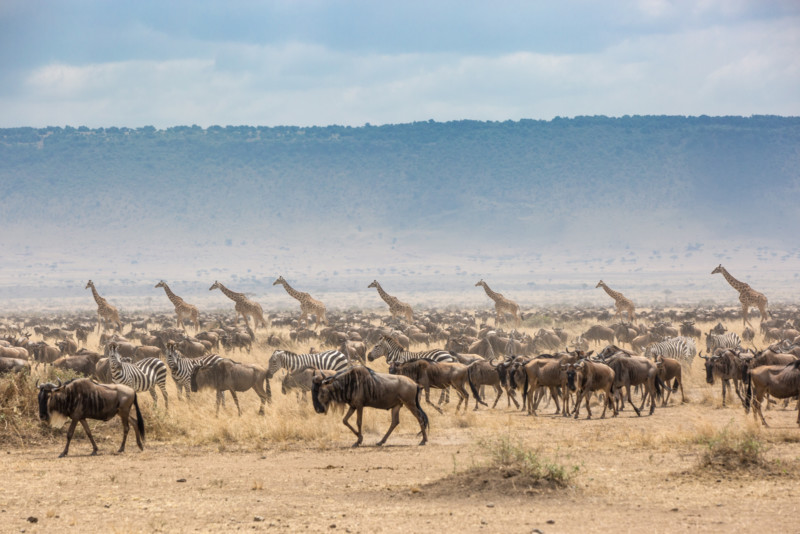
![]()
Trevor McCall-Peat, a wildlife photographer and Wild Eye photography guide, has led countless safari photography expeditions in a career that has spanned 15 years, but for him, no other location is as exciting as the Masai Mara.
![]()
![]()
“Each morning I wake up in Masai Mara, I am filled with excitement as to what the new day has to offer,” McCall-Peat says. “In the Masai Mara, especially during the Great Migration, you never know what you are going to see, but you do know that whatever it is, it will be incredible to witness. I have been leading safari trips in the region for years, however, I know that every time I return to the Masai Mara, I am going to see something I have never seen before. As a wildlife photographer, this leads to capturing portfolio worthy images each and every time I visit the Masai Mara.”
![]()
![]()
![]()
Known as one of the Seven Natural Wonders of Africa and one of the ten Wonders of the World, the Great Migration begins in the Ngorongoro Conservation Area in the southern part of Tanzania. The wildebeest move clockwise through Serengeti National Park as they make their way north towards the Masai Mara.
Between January and March, almost 300,000 zebras will precede the wildebeest and make their way across the plains of the Serengeti, on their way to the Mara for better grazing opportunities. Since the wildebeest will give birth to over half a million calves during the month of February, they do not begin their mass movement until the rainy season ends in May.
![]()
The wildebeest’s first stop is on the banks of Tanzania’s Grumeti River, located in Serengeti National Park northwest of the Ngorongoro Conservation Area. The herd will remain here until late June, letting their young gain strength and size by feeding off of the abundance of grass found around the river.
For those visiting Enkishui, Wild Eye’s Mara camp, the photography opportunities become abundant in mid to late July, as the wildebeest make their way to the Mara River. In addition to the jaw-dropping view of thousands of wildebeest kicking up dust as they pounce into the water, photographers witness dramatic scenes as hungry crocodiles lie under the water, waiting for their opportunity to strike the vulnerable prey.
![]()
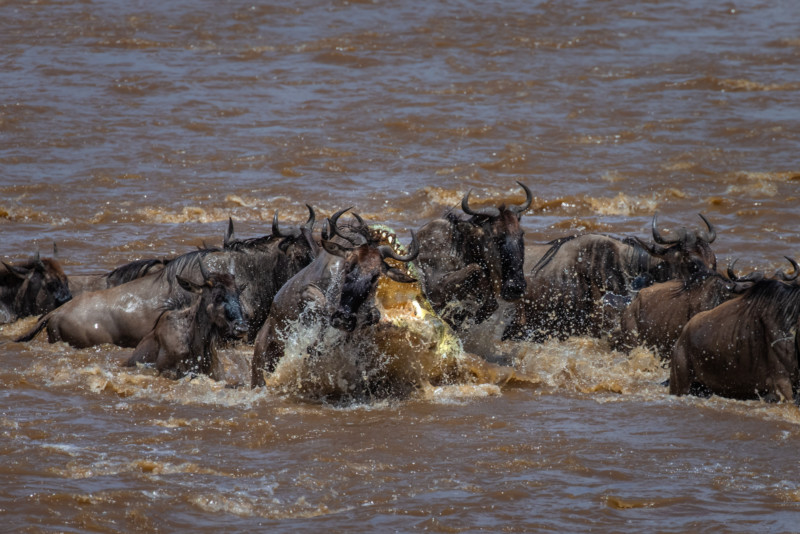
“The Mara river really is where you come to watch the show in the Masai Mara,” McCall-Peat says. “The large herds will cross the river multiple times during the Great Migration period in order to access prime grazing locations. This is where the predators thrive, most notably the massive Nile crocodiles, so as photographers, we always have to be alert. These crocodiles are such effective hunters because of their ability to surprise their prey, so these action packed moments can happen when you least expect it.”
![]()
While the Great Migration yields plenty of photo worthy moments, this is not the only time that wildlife photographers choose to visit the Masai Mara. During the months before and after, the larger crowds that have come for the Great Migration are gone, but the wildlife is still abundant, leading to more intimate encounters between the photographers at Enkishui and the animals they are there to capture.
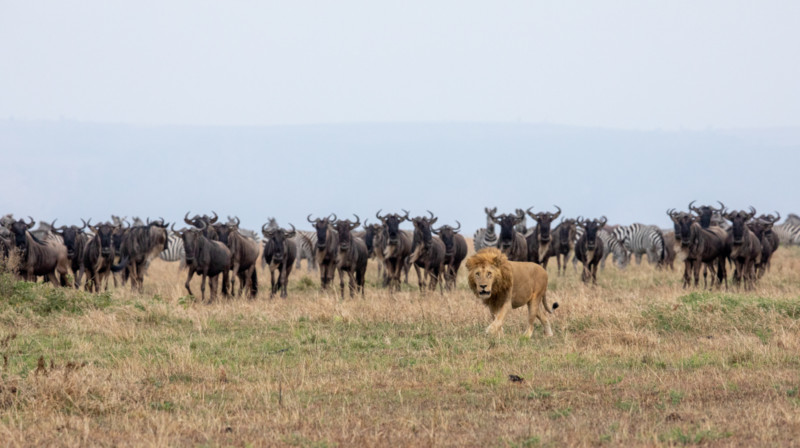
![]()
![]()
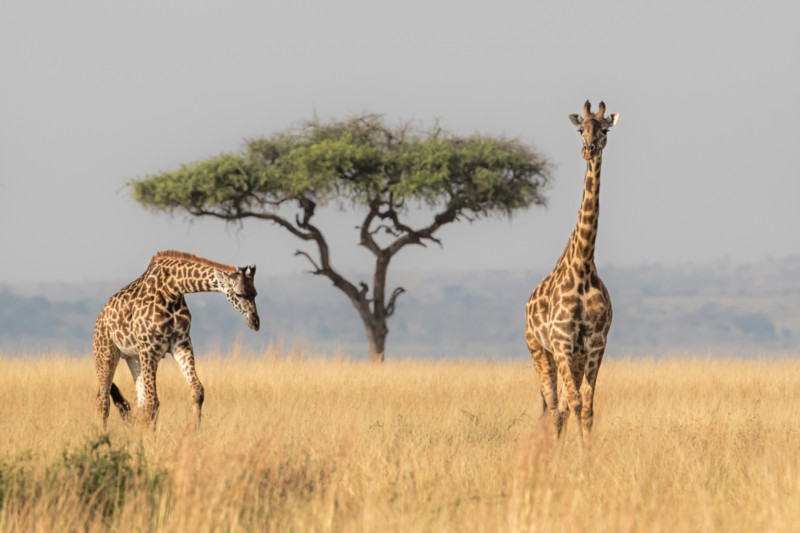
“Before we leave for the Mara, we communicate with the photographers who will be joining us on safari. The first thing we always recommend is to bring a lot of batteries and memory cards and to never get too relaxed in our safari vehicles. These incredible photography moments always seem to happen when you least expect it, so the best way to avoid missing the shot is to always expect it.”
![]()
![]()
While the daily safari drives are always memorable, McCall-Peat says that some of his favorite moments actually happen at Wild Eye’s Mara camp, Enkishui, which lies on the southern edge of Kenya’s Mara Triangle Conservancy, close to the Tanzanian border and the Serengeti.
In years past, the conservancy leased a fixed number of campsites in two-week increments to safari companies. That all changed in 2017, when the government approached Wild Eye with a unique proposal. During the Great Migration, countless wildebeests were drowning as they tried to cross a section of the Mara River with an exit that was very difficult to climb. If Wild Eye invested in a semi-permanent and sustainable camp at the location, the conservancy felt that the wildebeest would avoid the area. The gamble paid off, as the wildebeest have found an alternate, and safer, exit from the Mara river.
![]()
“Out of all of the locations that I am fortunate enough to visit, Enkishui feels the most like home,” McCall-Peat describes. “Not only is the camp beautiful, being located right off the banks of the Mara River, but it’s also a place where everyone feels like family. We dine together, laugh together, and celebrate together. The celebrations are probably my favorite. When we are out in the bush, it’s hard to really know what you are capturing through your lens. But after a long day of photographing, we sit in the camp’s media tent as a team and go through the photos that we captured. I can’t count how many excited screams I hear as our safari photographers import an image that they immediately know is a once in a lifetime capture. I will never get tired of seeing the excitement and satisfaction that these photos provide to wildlife photographers.”
![]()
![]()
“I feel that we are not only safari guides, but we are also stewards of this incredible land,” McCall-Peat concludes. “The Masai Mara is one of the most beautiful and unique locations in the world, as it’s one of the last places where wild animals truly are wild. This is only possible with conservation efforts and education, and all of us at Wild Eye strive to contribute productively to both in order to keep the Masai Mara wild and fascinating for generations to come.”
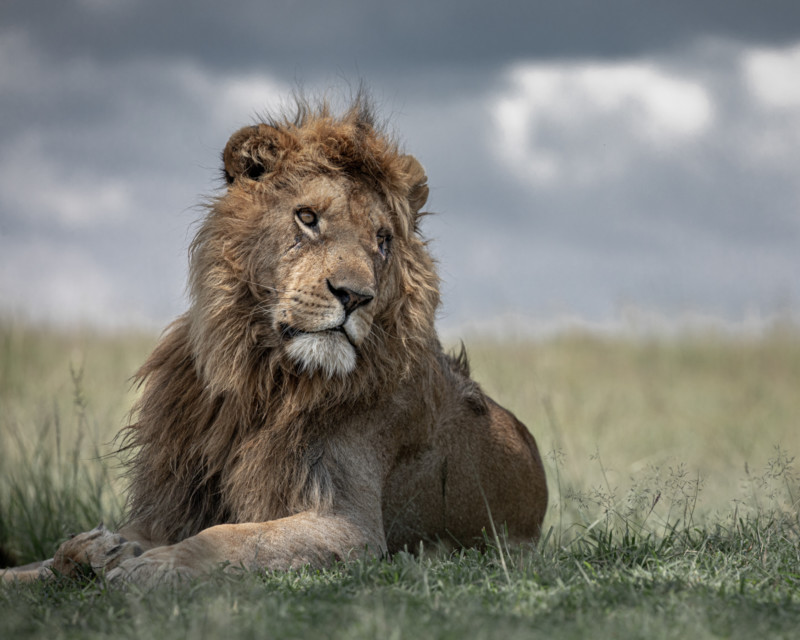
![]()
![]()
![]()
![]()
![]()
More from Trevor McCall-Peat can be found on his Instagram.
All photos by Trevor McCall-Peat unless noted.
Wild Eye Destination and Photographic is a South African company specializing in wildlife safari photography expeditions. Wild Eye’s destination offerings span six out of seven continents and 25 countries. Whether through group tours, custom itineraries, or privately guided safaris, their trips appeal to nature lovers, photographers, adventurers, and travel enthusiasts.